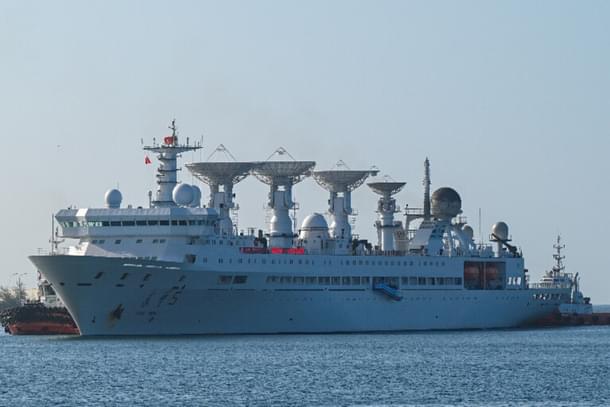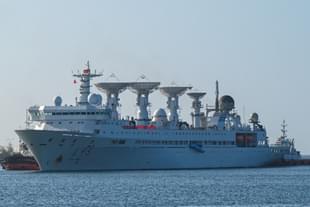Defence
India Postpones Missile Test Scheduled For This Week, Second Chinese Spy Ship Enters Indian Ocean Region
Swarajya Staff
Nov 12, 2022, 10:47 AM | Updated 10:55 AM IST
Save & read from anywhere!
Bookmark stories for easy access on any device or the Swarajya app.


India has notified a no-fly zone over a part of the Bay of Bengal as it is likely to test a missile in the region later this month.
The Notice to Airmen or NOTAM issued by India suggests that the missile test, which was scheduled for earlier this week, may now take place sometime between 23 and 24 November.
Earlier, India had notified a no-fly zone, indicative of a missile test, for 10 and 11 November. However, it was canceled after a Chinese intelligence-gathering vessel entered the Indian Ocean just days before the test. Equipped with surveillance equipment, the ship can track ballistic missiles and satellites and gather signal intelligence.
The new notice, like the one issued earlier, indicates that the missile may fly to a range of 2,200 kilometers. While some reports say that India plans to test its K-4 submarine-launched ballistic missile (SLBM), others suggest that the missile to be test-fired belongs to the Agni series of ballistic missiles. The K-4 SLBM has a range of 3,500 kilometers.
Chinese spy ship Yuan Wang VI, which entered the Indian Ocean earlier this month, is currently located around the Ninety East Ridge, south of the Andaman and Nicobar (A&N) Islands.

A second Chinese intelligence-gathering vessel, Yuan Wang V, appears to have entered the Indian Ocean region on 11 November. It is the same vessel Sri Lanka had allowed to dock at the Hambantota port in August this year despite concerns expressed by India. The last known location of Yuan Wang V was south of the Indonesian island of Bali.
The Chinese spy ships entered the Indian Ocean through the Lombok Strait, which lies between the Indonesian islands of Java and Sumatra. It is one of the three major chokepoints linking the Indian Ocean with the Pacific Ocean, the Strait of Malacca and Sunda Strait being the other two.
The deployment "appears to be in sync with a Chinese aerospace mission that flies over the Bay of Bengal between 15-20 November 2022," open source intelligence expert Damien Symon pointed out earlier this month.
While the space mission could be the official reason for the deployment of the spy ship to the Indian Ocean, it is highly unlikely that Beijing would let go of the opportunity to track the test of a missile that New Delhi can use to hold Chinese cities at risk of a nuclear attack.
India's only operational ballistic missile submarine (SSBN), INS Arihant, currently carries K-12 SLBMs. With a range of just 750 km, a K-12 fired from an SSBN in the Bay of Bengal can't reach China's industrial or population centers. However, with a range of over 3,500 kilometers, the K-4 missile will give India's SSBNs the capability to strike targets in a large part of China, including Beijing, from the northern region of the Bay of Bengal.
The addition of the K-4 missile to India's SLBM arsenal will improve the credibility of the sea leg of India's nuclear triad, which is the ability to launch a nuclear strike from land, air, and sea.
Also Read:
Explained: Chinese Spy Ship's Entry Into Indian Ocean Complicates India's Missile Test Plans
What China Wanted To Achieve With The Docking Of Spy Ship In Sri Lanka
Explained: What Are Chinese Survey Ships Up To In The Indian Ocean





